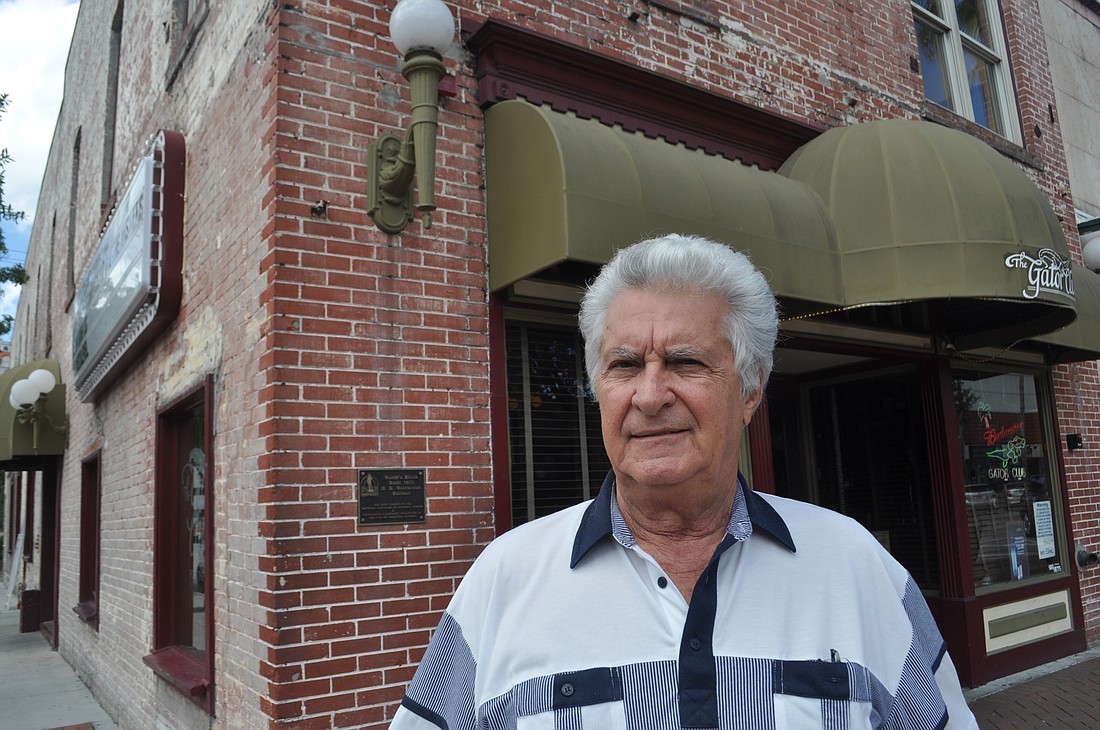- April 17, 2024
-
-
Loading

Loading

Ernie Ritz went before the city’s Historic Preservation Board in May to complain that too many buildings were being altered or demolished in the downtown historic district — a district he helped establish in 2009.
Based on the response he got from the board, Ritz started to suspect the problem was bigger than he originally believed. One board member asked him where, exactly, the downtown historic district was. Another one was surprised to learn it existed at all.
“If they don't know, then how would the general public know?” Ritz said. “How would a property owner know?”
"I'm setting out to identify the area little bit stronger. We did a lot to improve it, but still, people don't know that it's a historic district." — Ernie Ritz
Ritz, the former chairman of the city’s Downtown Improvement District, is searching for a way to increase awareness regarding the downtown historic district. After all, awareness was the entire reason the historic district was founded. Ritz was tired of seeing signs along I-75 advertising Mote Marine Aquarium, St. Armands Circle and the beaches but not downtown Sarasota, so he searched for a solution.
Ritz learned one way to get a sign along the highway was to establish a historic district. Working alongside former Downtown Sarasota Alliance Chairman Tony Souza, Ritz helped draw up the boundaries of that district, which extends across segments of Main Street, Pineapple Avenue, Mira Mar Plaza and Palm Avenue.
“We thought it would give Sarasota a sense of place,” Ritz said. “When you see it, visitors and residents alike would know where they are.”
The district is anchored by six buildings on the National Register of Historic Places, but 73% of the properties within the boundaries contributed to the historic distinction, Souza said. That’s why the lack of awareness is such a concern: Despite the presence of buildings that date back to Sarasota’s 1920s roots, Souza says buildings are being renovated or demolished without any consideration of their intrinsic value.
“Those buildings, indeed, should look like they're still in the ’20s, ’30s and ’40s, but with updated interiors,” Souza said. "That's not happening here.”
At Tuesday’s Downtown Improvement District Meeting, Ritz and Souza spoke to the board about the importance of preserving — and playing up — the historic character of some downtown buildings. Ritz applauds the work the DID has done during and after his tenure, but despite a smattering of streetscape and landscaping projects, the buildings themselves are a crucial piece of the puzzle when emphasizing history.
“I'm setting out to identify the area little bit stronger,” Ritz explained. “We did a lot to improve it, but still, people don't know that it's a historic district.”
Souza and Ritz said incentives exist to encourage property owners within the downtown historic district to renovate according to certain historic preservation guidelines. They also wanted to take things a step further — perhaps creating a local historic district, a state distinction that requires a more intensive approval process before any construction can take place on applicable properties.
“They’ve found, throughout the country, that these never decrease in value,” Souza said. “It's a safe haven for property owners.”
Ritz also advocated for capitalizing on the planned roundabout at Orange Avenue and Main Street. As the city's Public Art Committee works on curating artwork to place in the center of all of the city's planned roundabouts, Ritz suggested something harkening back to Sarasota's roots would be a natural fit for that particular intersection.
Among members of the DID board, there was some skepticism regarding the aesthetic worth of many downtown buildings that could be construed as historic. Other members wondered whether it was too late to preserve a significant portion of downtown’s history — particularly considering the pending demolition of the DeMarcay Hotel and Roth Cigar Factory, two of the six properties on the national register.
"Just because a building doesn't look historic anymore doesn't mean it's not historic." — Tony Souza
Still, Ritz and Souza believe that, in the right environment, the downtown core can grow to place a greater emphasis on its origins. Ritz pointed to the renovation of the Gator Club and Patrick’s 1481 buildings, both of which were modified to restore elements of their historic façade. Souza wagered that, beneath the surface of many downtown buildings, a more charming storefront is waiting to be discovered.
“Just because a building doesn't look historic anymore doesn't mean it's not historic,” Souza said.
The DID board offered an endorsement for Ritz’s efforts, but that’s just the beginning of his campaign. City officials suggested he gather support from a variety of lower-level advisory boards, including the Historic Preservation Board, before making his way up to the City Commission.
Ultimately, Ritz says, he wants to empower property owners to act with the knowledge their buildings are in a historic district — because he believes that, if given the opportunity, they’d value the history of downtown just as much as he does.
“Let people be aware that it's there and that there's something they can do to keep it there,” Ritz said. “Otherwise, you just keep on knocking buildings down or defacing them in a way that we could eventually lose our designation.”